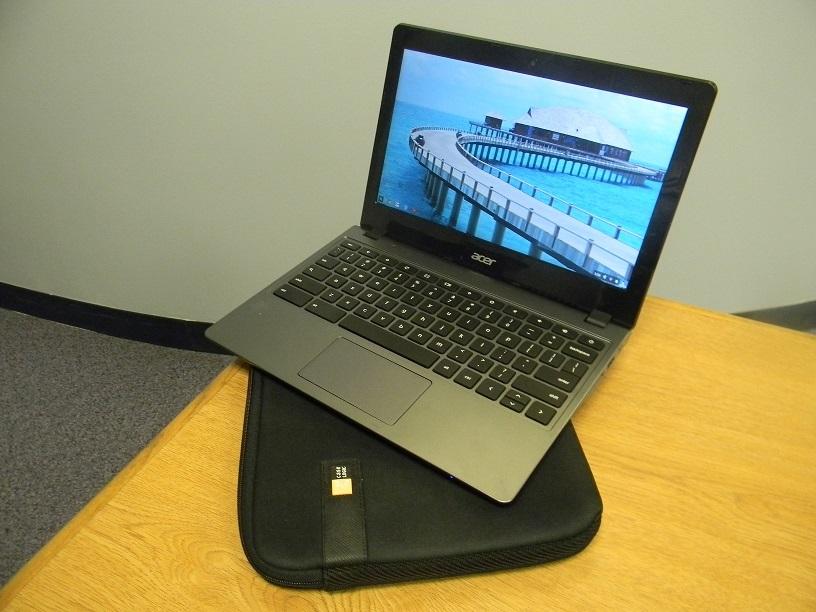District owned technology improves the school with one-to-one program
Photo by Kyle Paup
Each student is in possession of a district owned Chromebook, a device that teachers have regularly worked into the curriculum.
September 20, 2015
The addition of district owned Chromebooks to student life has been a beneficial step forward for the school despite a few conflicts.
While teachers can chose how much they wish to use the technology in their classes, it would seem that most have fully integrated the use of Chromebooks into the learning curriculum. This is not a bad thing.
This technology has helped eliminate stacks of papers weighing down student’s backpacks and has created an organized online storage locker through Google Classroom and Google Documents.
To those who already have computers and Internet at their home, the Chromebooks may not seem to hold much significance. But to those who do not have such privileges, the district owned technology is appreciated and seen as an advancement for the district.
They provide those without the specific technologies at home an opportunity to be up-to-date with the advancement of technology in society.
Since many colleges are now adapting to and relying on technology as well, it makes sense for students to have the opportunity to get accustomed to it at the high school level.
Students even have the chance to bring Internet to their homes with the addition of rentable hotspots that are given out at the LRC, meaning that accommodations were made for all students to be able to participate to the full extent with the one-to-one program.
From a student’s perspective, it would seem that most other students were strongly against the integration of technology in the previous year. But now that the technology is here and the benefits are clear, those students seem to have changed their minds.
Despite this being a step up for the school and the district, Chromebooks do not come without flaws.
Students are not able to print with their Chromebooks, requiring them to use the computers in the LRC or computer labs to do so.
While this does not make the printing process any more difficult than it was before, it seems like a wasted opportunity to make printing out assignments much easier.
Students are also not allowed to charge their Chromebooks in the school. This is understandable, but a bit of a nuisance when a Chromebook that was not charged the night before runs out of power in the middle of the school day.
Additionally, many students abuse the privilege of the Chromebooks on a daily basis.
A select amount of websites are blocked under the school’s Internet access, but this does not prevent students from using their Chromebook to play games or watch videos during class.
This proves to be a distraction for students and interferes with the teacher’s lessons.
However seeing as it is the student’s choice whether or not they abuse their privilege and hinder their learning experience, this does not entirely take away from the positives the Chromebooks bring to the school.






